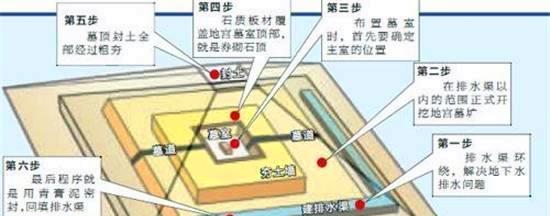When we travel to Shaanxi, we will definitely go to see the spectacular Mausoleum of the First Emperor of Qin, but the terracotta warriors and horses we see is only a small part of the mausoleum area, and the total area of the entire mausoleum area is 56.25 square kilometers, almost twice that of Macao.

As the first emperor of China and the first emperor to unify the world, Qin Shi Huang's mausoleum naturally had to be magnificent and atmospheric, and the design should also be carefully arranged.
According to historical records, The minister Li Si was the designer of the mausoleum, and the great general Zhang Handan supervised the work, and at that time, a total of 720,000 workers were recruited for the construction of the mausoleum, and even the number of people who repaired the mausoleum at the time of the change of personnel reached nearly 800,000 workers, which was equivalent to 8 times the number of people who built the Pyramid of Khufu.
So why is it that such a valuable mausoleum, but the country's archaeological team is slow to excavate?
First, there are lessons from the past, and there are national regulations
In fact, after Guo Moruo and others took the initiative to excavate the Ming Ding Mausoleum in the last century, when excavating cultural relics, most of the precious text paintings were oxidized and turned into soot at the moment of excavation, and other cultural relics were also damaged to varying degrees due to immature technology when they were unearthed.
Since then, the state has clearly stipulated that the imperial tomb can only be excavated for rescue, such as being destroyed by tomb robbery, or large-scale projects (Three Gorges), or encountering natural disasters, etc. can be excavated, and can not be actively excavated.
The same is true of the Terracotta Warriors and Horses of the Mausoleum of the First Emperor of Qin, discovered in 1974, with the newly unearthed terracotta warriors being colored, and soon after the excavation, they became earthy yellow.
Second, the archaeological excavation technology is not mature enough, and the cultural relics protection technology has not been able to keep up
The entire mausoleum of the First Qin Shi Huang Mausoleum is in the seismic belt, and in order to protect the cultural relics, active excavation can be carried out. According to historical records, there are a large amount of mercury in the mausoleum of Qin Shi Huang as a large river, and there are anti-theft organs such as crossbows and arrows, which are uncertain factors.
Duan Qingbo, the leader of the archaeological team of the Qin Shi Huang Mausoleum, once said in an interview that the excavation of the Qin Shi Huang Mausoleum is not as difficult as imagined, and the difficulty is the protection of cultural relics after excavation, especially the protection of the huge mausoleum, as well as the specific number of cultural relics (different cultural relics protection methods are different).
The most difficult is the protection of organic matter cultural relics, the huge mausoleum pit can not be isolated from the air at once, if it can not be completed in an instant, then all organic matter cultural relics will be reduced to ashes in a few seconds, all the excavation work will be wasted, and the historical value contained in the cultural relics will also disappear with the ashes.
Moreover, Duan Qingbo found that there was a high temperature anomaly above the underground palace during a survey, which triggered them to have some associations, and they did not know what kind of phenomenon it would be. There is also a huge drainage project under the tomb, due to the abundant groundwater resources of Lishan Mountain and many underground rivers, there is a huge drainage project in the mausoleum of Qin Shi Huang to keep the tomb dry, which is also a problem that needs attention in excavation.
Third, the safety of the lives of archaeologists
Even if there is a orthophoto map of the mausoleum now, it is basically clear that the general structure of the mausoleum, whether there is a mechanism, the treatment of a large amount of mercury in the mausoleum, etc. are all problems, and if you do not pay attention to it, the life safety of archaeologists will be endangered.
The most important thing is to carry out excavation under the problem of ensuring the safety of life, and with the current science and technology, it is not 100% possible to ensure the safety of archaeologists. Therefore, this is also one of the important reasons for the delay in excavation.
epilogue
At present, the land occupied by the Mausoleum of The First Qin Emperor is expropriated by the government to carry out tourism, and it also plays a role in monitoring and protecting the mausoleum to ensure that the mausoleum is not artificially damaged before the mausoleum is excavated.
Wait and see the day when the tombs begin to be excavated, many of the dusty historical secrets will be revealed, let us further understand the Great Qin Empire a thousand years ago, and appreciate the grandeur of the era of Qin Shi Huang.